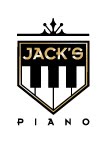Full Service Piano Tuning
A full service is more than just tuning. With more than 7500 parts just in the action alone, a qualified technician can easily understand the piano and do what is necessary to bring the piano to a maximum playing condition.
The list below is a sample of what a technician can go through very efficiently in a full service appointment making necessary adjustments and refinements.
First I will remove case parts then play every key, inspect bridge, strings, soundboard and pedals and so on, meanwhile keeping mental notes or mark with chalk anything that needs attention.
Then I start with first tuning and make a plan of what I can do nest to better improve the piano.
This is just a rough guide but an experience technician can assess a piano very quickly and make the best changes to your piano to improve it, giving you most bang for your buck.
Depending on each piano and condition 1 ½ -2 hrs. will bring your piano to a higher level of performance.
Pianos need regular maintenance and tuning alone will not be enough. Make sure to ask
your technician for a full service, tell him any concerns you may have.
FULL SERVICE PIANO TUNING
Checklist
T
ust pedals titg
T
ust pedals titg
Inspection, test keys-touch and tone
Pitch correction or first tuning
Clean, lube
Minor repairs, regulation, voicing
Fine concert tuning







